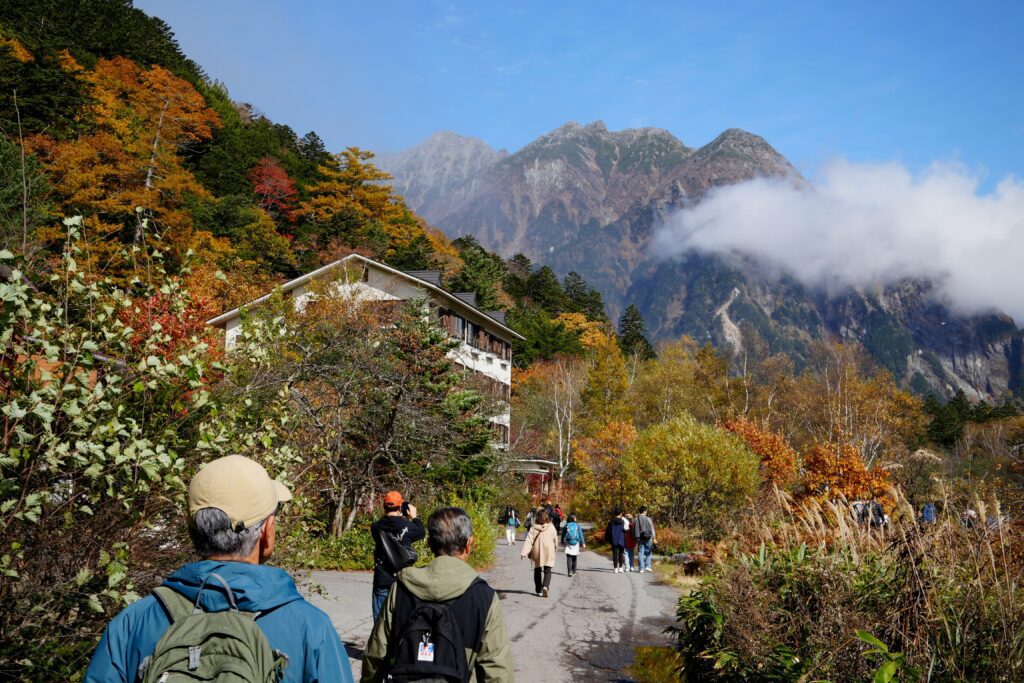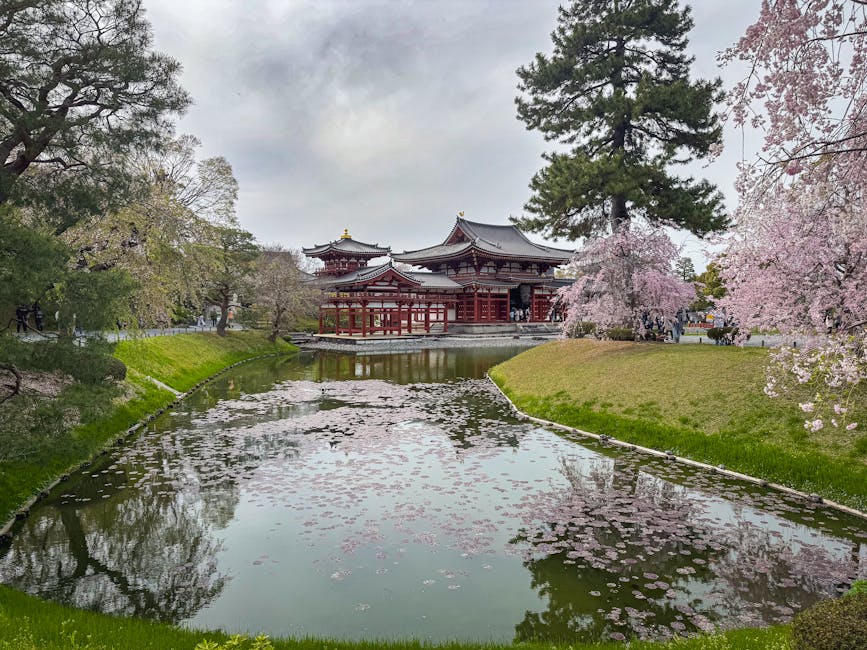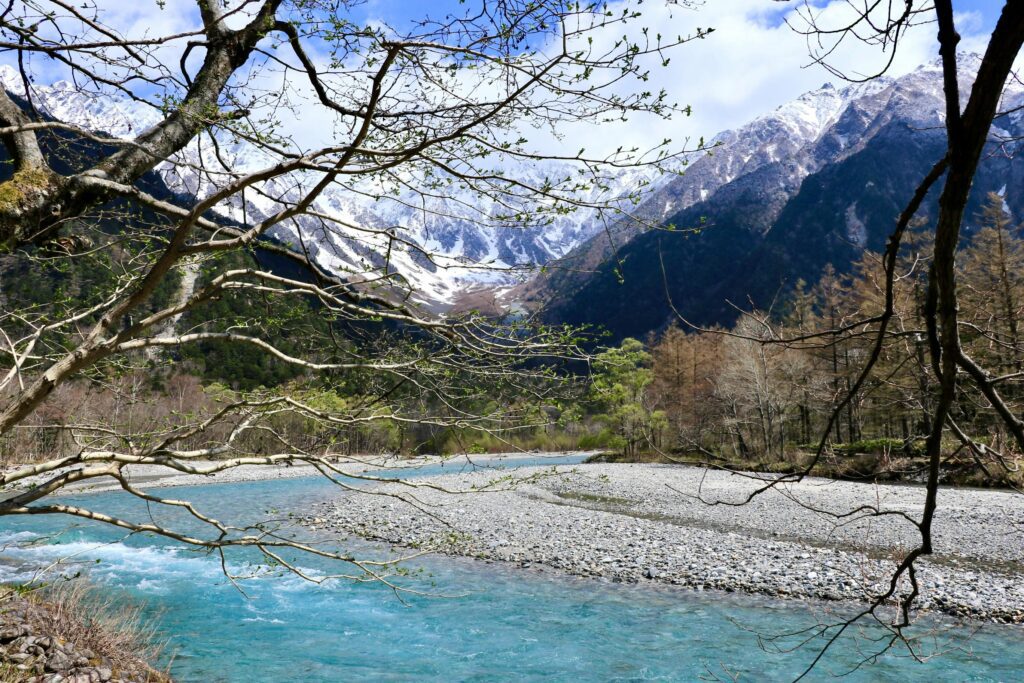“Discover hidden gems in Kamikochi, Japan. Explore off-the-beaten-path trails and unique experiences most tourists miss. Unveil Kamikochi’s secrets now!”
Introduction: The Alpine Paradise of Kamikochi
Stepping into Kamikochi for the first time, I was immediately enveloped by the crisp mountain air, the rhythmic murmur of the Azusa River, and the towering peaks of the Northern Japanese Alps. This pristine valley, designated as a Special Place of Scenic Beauty and Natural Monument, is a sanctuary for rare wildlife like Japanese serows, macaques, and over 100 bird species.

Kamikochi is more than just a national park—it’s a testament to Japan’s commitment to conservation. Closed to private vehicles, the valley thrives as an untouched alpine wonderland, offering breathtaking hikes, serene riverbanks, and a deep connection to nature. Whether you’re a seasoned hiker or a traveler seeking tranquility, Kamikochi promises an unforgettable escape.
Why Visit Kamikochi?
– Untouched Natural Beauty: Pristine rivers, dense forests, and dramatic mountain vistas.
– Rich Biodiversity: Spot rare wildlife and vibrant alpine flora.
– Cultural Significance: A sacred landscape with deep ties to Japanese folklore.
– Year-Round Appeal: Each season offers a unique experience, from cherry blossoms in spring to snow-capped peaks in winter.
Map of Hidden
Best Time to Visit Kamikochi: A Seasonal Guide
Spring (April–June): Blossoms and Renewal
- Wildflowers & Wildlife: Late April to June brings blooming alpine flowers like shirane-aoi (white mountain anemones) and nikko-kisuge (yellow alpine lilies). The valley awakens with the chirping of Japanese bush warblers and the occasional sighting of a Japanese serow.
- Weather: Mild (5–15°C / 41–59°F), but trails can be muddy—pack waterproof boots and a lightweight rain jacket.
- Tip: Visit in early May to avoid Golden Week crowds (late April to early May). The Taisho Pond area is particularly magical in spring, with mist rising from the water at dawn.
Summer (July–August): Peak Adventure Season
- Hiking Conditions: Warm (up to 25°C / 77°F) with clear trails. The snowmelt-fed Azusa River is at its most vibrant, perfect for cooling off your feet after a long hike.
- Crowds: Busy at Kappa Bridge; arrive before 8 AM or explore side trails like Myojin Pond or the quieter Tokusawa area.
- Festivals: Don’t miss the Kamikochi Mountain Festival in July, where locals celebrate with traditional music, food stalls, and bonfires.
- Wildlife: Keep an eye out for Japanese macaques playing near the riverbanks.
Autumn (October–November): A Symphony of Colors
- Foliage Peak: Mid-October transforms the valley into a golden wonderland, with the larch trees turning brilliant yellow and the maples adding fiery red accents. The contrast against the evergreen pines is breathtaking.
- Fewer Tourists: Ideal for photography and peaceful walks. The early morning light at Kappa Bridge is a photographer’s dream.
- Weather: Cool (0–15°C / 32–59°F), with occasional frost in late November. Pack warm layers and a thermos for hot tea.
Winter (December–March): A Silent Wonderland
- Accessibility: Closed to tourists (road access shuts mid-November to mid-April). The only way to experience Kamikochi in winter is through guided snowshoeing tours.
- For Adventurers: Snowshoeing tours are available with local guides, offering a rare glimpse of the valley blanketed in snow. The silence is profound, broken only by the occasional call of a mountain bird.
Pro Tip: Book accommodations 3–6 months ahead for autumn stays—rooms fill fast! Consider staying in nearby Hirayu Onsen for more options.

Off-the-Beaten-Path Gems in Kamikochi
1. Myojin Pond & Hotaka Shrine
- Why Go? A serene, lesser-visited shrine nestled beside a mirror-like pond. The water is so clear you can see the reflections of the surrounding peaks with perfect clarity.
- Local Lore: Dedicated to the deity of the Hotaka Mountains, the shrine is a place of quiet reverence. Locals believe the pond is home to kappa (water spirits).
- Best Time: Sunrise for misty reflections, or late afternoon when the light turns golden.
- How to Get There: A 1-hour walk from Kappa Bridge, or take the bus to Myojin Pond stop (¥500 one way).
2. Dakesawa Marsh
- Hidden Hike: A 2-hour trek from Kappa Bridge rewards with panoramic views of the Hotaka Range. The trail is steep in places but well-marked.
- Wildlife Spotting: Look for ptarmigans and rock ptarmigans, which blend perfectly into the alpine terrain.
- Pro Tip: Pack a picnic—there are no facilities here, but the views are worth it.
3. Tokusawa Enclosure
- Secluded Camping: A quiet meadow with views of Mt. Yakedake (active volcano). The area is less crowded than Konashidaira Campground.
- Backpacker Tip: Free camping allowed here (pack out all trash). There’s a small hut selling basic supplies like instant noodles and drinks.
- How to Get There: Take the bus from Kamikochi Bus Terminal to Tokusawa (¥700 one way).
Local Experiences & Cultural Etiquette
1. Staying in a Mountain Hut (山小屋)
- Must-Try: Nishi-Hotakagoya Hut (¥8,000/night, includes dinner). The communal dining area is a great place to meet fellow hikers.
- Etiquette: Remove shoes indoors and observe quiet hours after 9 PM. Bring earplugs if you’re a light sleeper—the huts can be noisy with early risers.
- Personal Anecdote: I’ll never forget sharing a pot of hot sake with a local guide under the stars—his stories of mountain spirits brought Kamikochi’s legends to life.
2. Savoring Alpine Cuisine
- Must-Eat: Hoba Miso (fermented miso grilled on magnolia leaves), Sansai Soba (buckwheat noodles with wild mountain vegetables), and Oyaki (stuffed dumplings).
- Best Spots:
- Kamikochi Lemeiesta Hotel’s dining room (¥2,000/breakfast): Try their Hoba Miso set.
- Shirakaba-so Lodge (¥1,500/lunch): Famous for their Sansai Soba.
- Kamonji-goya (¥1,000/snack): Their Oyaki with sweet red bean paste is a hiker’s favorite.
3. Cultural Insights
- Respect Nature: Kamikochi is a sacred place. Avoid loud noises, stick to marked trails, and never feed wildlife.
- Onsen Etiquette: Wash thoroughly before entering the hot springs, and don’t wear swimsuits (towel modesty is acceptable).
- Local Customs: It’s polite to greet fellow hikers with a nod or a quiet “Konnichiwa.”
3-Day Kamikochi Itinerary
Day 1: Iconic Landmarks & Easy Hikes

- Morning:
- Start at Kappa Bridge for sunrise photos.
- Walk to Taisho Pond (1.5 hrs), where the morning mist creates a surreal atmosphere.
- Afternoon:
- Lunch at Kamonji-goya (try their Oyaki).
- Hike to Myojin Pond (3 hrs round-trip), stopping at Hotaka Shrine.
- Evening:
- Onsen soak at Gosenjaku Hotel (¥1,000 for day visitors).
- Dinner at Shirakaba-so Lodge (Sansai Soba recommended).
Day 2: Alpine Adventure
- Morning:
- Bus to Tokusawa (¥700), then hike to Dakesawa Marsh (4 hrs).
- Pack a bento from Kamikochi Bus Terminal (¥1,200).
- Afternoon:
- Picnic at Dakesawa Marsh with views of the Hotaka Range.
- Return to Tokusawa for a relaxing stroll along the river.
- Evening:
- Stargazing at Konashidaira Campground (bring a blanket and hot tea).
Day 3: Cultural Immersion
- Morning:
- Visit Hotaka Shrine for a quiet moment of reflection.
- Join a local craft workshop (¥2,000) to make washi paper or wood carvings.
- Afternoon:
- Leisurely walk along Azusa River, stopping at cafes for matcha and sweets.
- Evening:
- Farewell dinner at Kamikochi Lemeiesta Hotel (Hoba Miso feast).
Note: Customize your itinerary with our interactive Kamikochi trip planner!
Practical Travel Tips
- Transport:
- From Tokyo: Take the JR Azusa Limited Express to Matsumoto (2.5 hrs, ¥6,500), then a bus to Kamikochi (1.5 hrs, ¥4,500).
- From Nagoya: Take the JR Wide View Shinano to Matsumoto (2 hrs, ¥5,800), then the bus.
- Packing List:
- Waterproof hiking boots
- Layers (temps drop quickly)
- Bear bell (yes, they’re real here!)
- Cash (no ATMs in Kamikochi)
- Costs: Budget ¥10,000–¥15,000/day (incl. lodging/food).
FAQ Section
1. Is Kamikochi wheelchair accessible?
Limited access—flat paths near Kappa Bridge, but most trails are rugged. Wheelchair users can enjoy the riverside promenade but may need assistance.
2. Are there ATMs in Kamikochi?
No—bring cash (most lodges and restaurants don’t accept cards). The nearest ATM is in Hirayu Onsen.
3. Can I visit Kamikochi in winter?
No—roads close mid-November to mid-April. Only guided snowshoe tours are available.
4. Are bears a concern?
Rare but possible—carry a bell and avoid hiking alone at dawn/dusk. Store food properly.
5. What’s the best hike for beginners?
Taisho Pond to Tashiro Bridge (flat, 1.5 hrs). For a challenge, try the Yakedake Trail (6 hrs).
Conclusion: Your Kamikochi Adventure Awaits
Kamikochi is a place where nature’s grandeur meets quiet reverence. Whether you’re chasing autumn hues, summiting peaks, or simply breathing in the alpine air, this valley leaves an indelible mark.
Note: Start planning your Kamikochi adventure today—before the secret gets out!
Keywords:
Kamikochi Japan travel best time to visit Kamikochi Japan what to do in Kamikochi Japan Kamikochi Japan attractions Kamikochi Japan hiking trails



